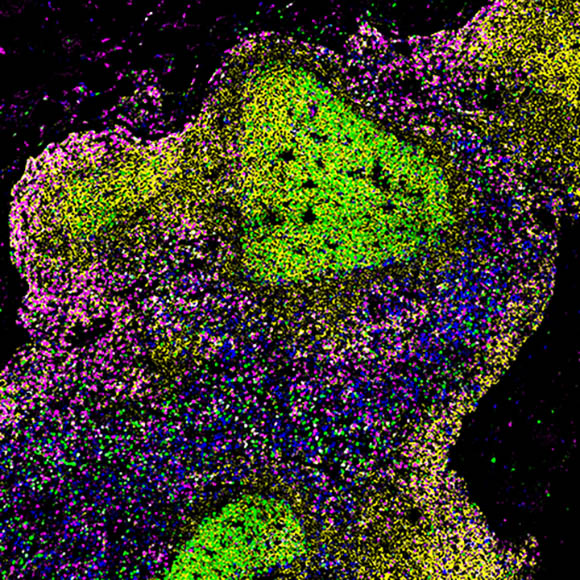Scientific Moment
Lymph Node of Person with Untreated HIV

A microscopic image of a biopsied lymph node of a person with untreated HIV, showing large germinal centers containing abnormal proliferating B cells (bright green triangle-shaped area) and an accumulation of cells expressing the transcription factor T-bet (magenta) in the surrounding areas.
NIH researchers found that in the setting of HIV-associated chronic immune activation, failure of HIV-specific B cells to enter or remain in the germinal centers may help explain the rarity of high-affinity protective antibodies. A better understanding of the process and the lymph node architecture where these antibodies develop will provide further insight into adaptive immunity in chronic infectious diseases and how responses to pathogens may be improved by therapeutic intervention. (Sci Transl Med 11:eaax0904, 2019)
CREDIT: NIAID
(NIAID, CC, and NCI authors: J.W. Austin, C.M. Buckner, L. Kardava, W. Wang, X. Zhang, V.A. Melson, R.G. Swanson, A.J. Martins, Y. Dimopoulos, A. Chassiakos, S. O’Dell, M.G. Smelkinson, C.A. Seamon (CC), R.W. Kwan (CC), M.C. Sneller, S. Pittaluga (NCI), N.A. Doria-Rose, A. McDermott, T.-W. Chun, J.S. Tsang, C. Petrovas, and S. Moir; Sci Transl Med 11:eaax0904, 2019)
This page was last updated on Tuesday, March 29, 2022
